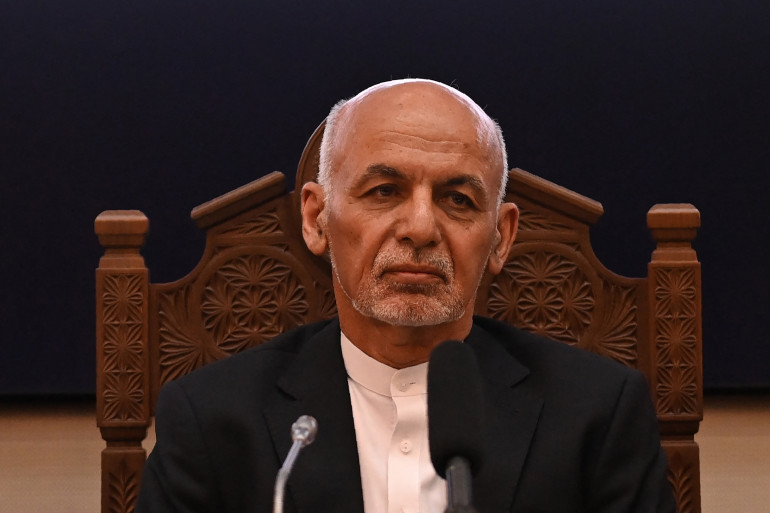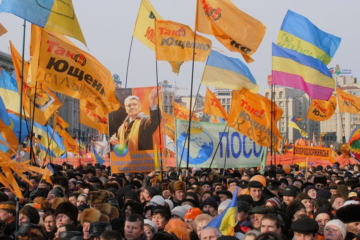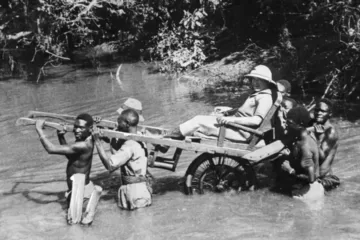[Part 2] The War in Afghanistan (2001-2021)
[Published originally on 18/09/2021 together with Part 1 and Part 3]
What you want to understand… 🤔
- Why did the US intervene in Afghanistan in 2001?
- How did the War on Terror unfold?
- What relation do the Taliban have with other Islamist organisations like Daesh?
- How was Osama bin Laden killed? And what role did Pakistan play?
- Why did the US withdraw their troops from Afghanistan in 2021?
Summary of the War in Afghanistan since the US intervention in 2001
A. 9/11 Attacks and the War on Terror
On September 9, 2001, Massoud was murdered during a fake interview by two al-Qaeda fighters who pretended to be journalists. As mentioned in Part 1, the Taliban hosted al-Qaeda and by killing Massoud al-Qaeda did a favour to their host. Massoud was one of those who alerted the international community several times about the immediate danger that al-Qaeda represented for the security of Western societies and in particular the US.
During this period, the CIA relied heavily on technical intelligence and neglected human intelligence. They couldn’t identify, or didn’t want to acknowledge, what was hanging over their heads…
After al-Qaeda attacks on the World Trade Centre’s Twin Towers and on the Pentagon (September 11, 2001), President George W. Bush launched the War on Terror. It is an international military campaign seeking to put an end to Islamist terrorist activities by targeting specifically al-Qaeda. Here lies the first mistake of the US. Seeking to defeat terrorism is an objective way too vague. It doesn’t allow to set clear boundaries on the location, duration and means of this military campaign.
In the wake of 9/11, the US decided to invade Afghanistan so as to topple the Taliban regime that refused to hand in Osama bin Laden. The US wanted to destroy al-Qaeda and capture its leader Osama bin Laden.
B. A rapid win over the Taliban but a danger still latent
The US invasion of Afghanistan was supported by the UK, NATO forces (within the International Security Assistance Force (ISAF)) and the Northern Alliance (more info in Part 1). It is worth noting that the US also resorted to some private military companies like Saladin (British company) or Blackwater (American company).
The campaign started in October 2001 and by December the Taliban and al-Qaeda were beaten. However, most of them fled to South Pakistan (where the Taliban still had some troops), to mountainous Afghan regions and along the Pakistani border.
During the Bonn Conference (December 2001), Afghan leaders decided to choose Hamid Karzai as the leader of the Afghan Interim Authority. He was then elected (universal suffrage) in 2004 and 2009 as the President of the Islamic Republic of Afghanistan that was then established in 2004.

The US wanted to rely on this man in order to reconstruct Afghanistan according to the Western model (e.g. centralized authority, democracy, secularism…). In this objective, the US sent $38 billion to provide humanitarian assistance.
However, the Taliban continued guerrilla actions. Moreover, warlords in rural areas managed to retain and even increase their power.
In 2003, the Taliban reorganised themselves under the leadership of the Mullah Omar. They launched several attacks against Kabul and coalition forces by using the Pakistani border region as a rear base. It is important to bear in mind that albeit Pakistan officially didn’t support and even fought the Taliban, it actually kept funding this Islamist group. In fact, in 2014, a former head of Pakistan’s Inter-Services Intelligence (ISI), General Hamid Gul, asserted that his government had misappropriated US financial support to help the Taliban insurgency.
C. The Taliban got back on their feet
The Taliban’s religious objectives were intertwined with mafia objectives like trafficking opium. In fact, getting involved in drug trafficking allowed them to both finance their war and gain popular support in rural regions where poppy crops grow. Nonetheless, it is worth mentioning that before the US intervention in 2001, cultivators of poppy crops were executed since their activity was not considered halal.
These sources of income allowed the Taliban to resume fighting at a large scale as of 2005. Beside multiplying guerrilla actions, they increased the number of suicide attacks and hostage-taking operations. Between 2007 and 2009, the Taliban came out victorious of several conflicts in mountainous regions. Moreover, the Afghans started losing faith in Western promises to rebuild a peaceful country. Indeed, they complained about:
- civilian casualties caused by bombings
- an everlasting reconstruction
- abuses on prisoners in US jails
- a rampant corruption among Afghan civil servants
It sparked both a confidence and a credibility crisis in the Western camp. As a result, the US adopted a new strategy. They endeavoured to strengthen the Afghan government and gain popular support while increasing US troops on the ground. As a matter of fact, in February 2009, President Barack Obama sent 17,000 additional US troops in Afghanistan to fight along the 36,000 US troops and 32,000 NATO forces already on site. He later announced that 30,000 more US troops would join them by 2010. In 2011, the number of US soldiers peaked at 110,000 troops on the ground.

Just after his re-election in 2009, as President of the Islamic Republic of Afghanistan, Hamid Karzai invited several times the Mullah Omar to meet but the latter refused. Albeit there were talks between the Taliban, the US and the Afghan government, the US refused to see any rapprochement between the Afghan government and the Taliban. President Karzai didn’t like this disapproval of his initiative and thus demanded that the US stop interfering in Afghan affairs otherwise he would join the Taliban…
D. Osama bin Laden killed in Pakistan by US Navy Seals
Osama bin Laden was killed on May 2, 2011, in Abbottabad, Pakistan. After arriving by helicopter, Navy Seals engaged in a firefight with soldiers guarding the compound in which the leader of al-Qaeda was living. They then had to kill the al-Qaeda leader, instead of capturing him, due to a fierce resistance.
What interests us here is the role played by Pakistan and its Inter-Service Intelligence agency (ISI) in the assassination of Osama bin Laden.
First of all, Pakistani forces weren’t aware of the secret operation and couldn’t react the night of the assassination. The humiliation was huge for Pakistan which resulted in important frictions with the US: their military cooperation was put to an end.
We can wonder how the Pakistani army was unaware of the presence of Osama bin Laden on its territory while he was hiding in Abbottabad, a city with a strong military identity, for almost 5 years. The underlying question is: was the ISI an al-Qaeda accomplice or was it simply incompetent ?

Even though the US collected lots of data at bin Laden’s compound, the CIA and the NSA didn’t manage to find any proof of a potential help from ISI to al-Qaeda. However, it doesn’t prove that the ISI was innocent.
We have to bear in mind that Pakistan’s position regarding the Taliban was far from being clear. For instance, it has been proven that the ISI supported the Haqqani faction, an Islamist network allied with the Taliban and that acted from the Miranshah region in Pakistan. There was probably a pact of non-aggression between the ISI and this Taliban group even though on many cases related to the Afghan war the ISI and the CIA worked closely against the Taliban…
Moreover, a military camp was located in the city of Abbottabad 1km away from the place where Osama bin Laden had found refuge. This camp was the base for several Pakistani Army Brigades as well as for the military officers’ college. Therefore when senior officers came to give speeches to new officers, the surroundings had to be searched and secured. Isn’t it strange that Osama bin Laden’s guards and his house’s security system didn’t catch the ISI’s attention in one way or the other ?
However, there are many grey areas in this affair. For instance, Osama bin Laden lived quite rudimentarily in his house as was proven by the electricity bills that showed a really low consumption.

E. The end of the combat mission in Afghanistan amid growing tensions and criticisms
As mentioned previously, the US and NATO forces didn’t manage to gain popular support. For instance, in 2012, Afghan people complained about US soldiers’ condescending attitude as well as unacceptable behaviours like urinating on dead bodies or burning copies of the Quran. Furthermore, the cooperation between NATO and Afghan armed forces, whether it was the police or the military, was hampered by betrayals and desertions.
Nevertheless, an agreement was reached in May 2012 between Afghanistan, the US and NATO. They pledged to reinforce their cooperation in economic and security affairs and to withdrawal most of NATO troops by 2014 while maintaining partially the US presence.
In 2014, an agreement still had to be signed to decide how many troops would leave and how many would stay in Afghanistan. President Karzai was replaced in September 2014 by Ashraf Ghani who facilitated the negotiation process and eventually reached an agreement with the US and NATO.

In the meantime, the chief of the Taliban, the Mullah Omar, died in April 2013. He had fled Afghanistan in 2004 to lead Taliban operations from Pakistan. He died in a village in Southern Afghanistan in unknown circumstances even though it is highly probable that he died from sickness. Following a shura (assembly), Akhtar Mohammad Mansour was designated to take over the leadership of the Taliban.
On December 28, 2014, the US’s and NATO’s combat mission was officially over in Afghanistan. It made way for a mission of assistance of the Afghan army relying on the participation of 13,000 US and NATO soldiers. We can also add that private military companies like Saladin (British company) or Blackwater (American company) took over national armies to secure territories conquered by the latter.
The US intervention in Afghanistan in 2001 was designed to first of all destroy al-Qaeda. Most of its leaders were indeed killed but the Taliban remained in control of most of Afghan rural regions and they kept hiding Islamist terrorists. Certainly al-Qaeda’s organisation was largely disrupted, but by destabilising the Afghan society and by exacerbating communitarian tensions (prominence of warlords and tribal chiefs), the US provided a fertile ground for the emergence of Islamist fighters who grew up with strong anti-western feelings.
F. Another civil war as the insurgency continues (2014-2021)
The situation grew worse with the increase of terrorist attacks, hostage-taking and various forms of guerrilla.
We started speaking of a 4th civil war as the Afghan government was opposed to the Taliban, al-Qaeda as well as to Daesh. Let’s bear in mind that there was no clear distinction between the territories that each of these belligerents controlled.
Daesh took advantage of the high instability that followed the US withdrawal in order to gain influence in Afghanistan.
Quick reminder of the relation between the Taliban, al-Qaeda and Daesh:
Let’s not forget the broader context and the fact that Daesh rose to power in most of Iraq and Syria in 2014 and 2015. This Islamist jihadist group was opposed to the Taliban and al-Qaeda as well as any governments that was close to Western powers like the Afghan government.

Daesh is an Iraqi offshoot of the Islamist group al-Qaeda. Daesh split from al-Qaeda in 2013-2014 because of clashes between Daesh’s leader, Abu Bakr al-Baghdadi, and al-Qaeda’s leader, Ayman al-Zawahiri (who succeeded Osama bin Laden after his death). These clashes revolved around the strategic decision to expand in Syria (al-Baghdadi’s intent) or to gather al-Qaeda forces in Iraq (al-Zawahiri’s intent). Besides, there were ideological differences between Daesh and al-Qaeda. Indeed, on one hand Osama bin Laden and his successor wanted to target a “far enemy“, i.e. the USA and its Western allies, and promote Muslim unity by discouraging sectarianism. On the other hand, Abu Bakr al-Baghdadi wanted to cleanse Islam of a “near enemy” that “defiles the religion”: cosmopolitan and elite populations but first and foremost Shia Muslims (from Iran in particular). Osama bin Laden didn’t share this hate for Shia Muslims. As you must have understood, Daesh and al-Qaeda cannot stand each other. Besides, since al-Qaeda is allied with the Taliban, then the Taliban and Daesh are enemies.
G. Diplomatic meetings and negotiations to organise the complete withdrawal of US forces from Afghanistan
While he initially wanted to leave Afghanistan, President Donal Trump decided to prevent the creation of “a vacuum for terrorists” and to adapt the US strategy to the reality on the ground. He therefore sent 5,000 US soldiers in April 2017 and 1,000 additional troops in September of the same year.
In February 2017, Russia took the initiative to organise an international meeting in Moscow with Afghanistan, China, India, Pakistan and Iran. The goal was to propose solutions to restore peace and put an end to this conflict which started in 2001.
In late 2018 and early 2019, rounds of negotiations between the US and the Taliban took place in Doha, Qatar. Peace talks resulted in a proposition of agreement in which the US would withdraw from Afghanistan within 14 months as of February 2019. In exchange, the Taliban would prevent terrorist organisations from operating in Afghanistan.

However, the ceasefire that was agreed upon didn’t last long since the Taliban kept attacking US and Afghan troops. That’s why President Donal Trump decided to cancel the talks in September 2019.
Despite regular attacks from both sides, talks quickly resumed and a peace agreement was found in September 2020. In addition to the conditions mentioned in the 2019 agreement, the US demanded that intra-Afghan negotiations took place in Doha, Qatar. Next November, despite intra-Afghan talks being in a deadlock, Donal Trump announced a reduction of US troops to 2,500 by January 2021 (just before Joe Biden’s inauguration).
H. US withdrawal and Taliban take over
In April 2021, President Joe Biden planned the complete withdrawal of US troops by September 11, 2021. The US hoped that Afghan forces would replace its troops and ensure the country’s security. It also hoped that intra-Afghan negotiations started in September 2020 would continue…
But it is difficult to imagine the Taliban continuing these negotiations once the US has left Afghanistan. Indeed, the Taliban did not want to compromise their religious objectives by discussing with “corrupted” Afghan elites. Furthermore, the Taliban were undermining the peace process by maintaining a state of terror. As a matter of fact, in Afghanistan, between July 13, 2020, and November 12, 2020, 9,600 breaches of security were attributed to the Taliban. In addition, during the last trimester of 2020 the number of children victims of violence increased by 25% and the number of attacks on schools was multiplied by 4 compared to the previous trimester.
As the withdrawal operation started in May 2021, the Taliban managed to gain control of several provincial capitals. On August 16, 2021, most of Afghanistan and Kabul had fallen into Taliban hands. President Ashraf Ghani was thus forced to leave the country to the United Arab Emirates.

In order to organise the evacuation of their nationals and of those who helped western forces in the war, the US sent 6,000 troops. Despite a Daesh attack at a checkpoint near Kabul airport that killed 13 US soldiers and 170 civilians on August 26, the evacuation kept going and was declared complete on August 31, 2021. In total, 124,000 people managed to flee Kabul through its airport.
I. Casualties of the war in Afghanistan since 2001
In addition to 20,149 wounded soldiers, the US lost a total of 2,448 fighters during the longest war of its history (20 years). Its allies (mainly NATO troops) lost 1,144 soldiers. The death toll for Afghan armed forces amounted to 66,000 people and the number of Afghan civilians who lost their lives was 47,245. There were also 51,191 Taliban who died since 2001.
If you want to read the other parts of this article click there:
- Part 1 : Wars in Afghanistan between 1979-2001
- Part 3 : Why did the US fail in Afghanistan (2001-2021) ?



4 Comments
[Part 1] Wars in Afghanistan (1979-2001) - geopol-trotters · 17 May 2022 at 11:16 am
[…] originally together with Part 2 and Part […]
[Part 3] Why did the US fail in Afghanistan (2001-2021) - geopol-trotters · 17 May 2022 at 11:11 am
[…] [Published originally on 18/09/2021 together with Part 1 and Part 2] […]
Wars in Afghanistan since 1979 and the recent US failure [Part 1] - geopol-trotters · 16 May 2022 at 4:44 pm
[…] originally together with Part 2 and Part […]
Wars in Afghanistan since 1979 and the recent US failure [Part 3] - geopol-trotters · 16 May 2022 at 12:17 pm
[…] [Published originally on 18/09/2021 together with Part 1 and Part 2] […]